Multiwindow multithreaded scene rendering example.
Shoot rays through your Looking Glass.
Yet another quick school project.
- Automatic Looking Glass calibration
- through Holoplay.js if you have Looking Glass Bridge application running and Node.js installed
- through good old USB interface as a fallback
- Looking Glass rendering works correctly only in full screen mode (press
f)
- Loading scenes (many supported formats through assimp but optimized for glTF format with no embedded textures)
- Non-realtime path tracing
- Realtime ray tracing
- Example Cornell Box scene (cornellBox.glb)
- Input processing on one thread and rendering on another thread (event queue synchronization may be slow, but VS profiler shows 'not that much'🙃)
- Works even if you set display scaling different than 100% (like me)
- Acceleration of triangle rendering by using BVH and Embree-like triangle data structure
- There aim was to make this project portable, but it was tested only on Windows 10 x64 with GTX 1050 Mobile
- Install CMake, vcpkg and node.
- Setup
vcpkgby running.\vcpkg\bootstrap-vcpkg.bator.\vcpkg\bootstrap-vcpkg.shin the directory where you clonedvcpkg- this will also print your toolchain file path
something.../vcpkg.cmake - If you are using Visual Studio, you can also
vcpkg integrate install
- clone this repo
git clone git@github.com:OSDVF/LookingGlassPT.git cd LookingGlassPTmkdir build && cmake -B./build -S. -DCMAKE_TOOLCHAIN_FILE=[path to vcpkg]/scripts/buildsystems/vcpkg.cmake- or for the Visual Studio: add CMakePresets.json. Example:
{
"version": 3,
"configurePresets": [
{
"name": "windows-base",
"hidden": true,
"generator": "Ninja",
"binaryDir": "${sourceDir}/out/build/${presetName}",
"installDir": "${sourceDir}/out/install/${presetName}",
"cacheVariables": {
"CMAKE_C_COMPILER": "cl.exe",
"CMAKE_CXX_COMPILER": "cl.exe",
"CMAKE_TOOLCHAIN_FILE": "C:/vcpkg/scripts/buildsystems/vcpkg.cmake"
},
"condition": {
"type": "equals",
"lhs": "${hostSystemName}",
"rhs": "Windows"
}
}
}The executable directory (conatining LookingGlassPT.exe) will be different than the build directory (containing CMakeCache.txt, node_modules...) when building under MSBuild. It is the required to run the application with the build directory as the working directory or it will crash because of not finding required shaders (vertex.vert & fragment.frag) and calibration script (index.js).
There are two windows
- Control window for changing program settings variables (e.g. switching between flat screen and looking glass)
- Rendering window Optional program arguments
ddisplay debug consoleflatskip initial the searching for a connected looking glass and use flat screen directly
The left window is a "control window". You can set scene parameters there.
- Scale - the program does not check the scene for correct scaling. You must set correct scaling here. For the cornellBox.glb scene the correct scaling is 10x (1 when using logarithmic scale)
- When using Logarithmic Scale: 0 -> 1x, 1 -> 10x, 2 -> 100x, -1 -> 0.1x
- Maximum Object Count: although this project uses BVH for triangle rendering acceleration, the complexity scales with large number of triangles. Try to reduce the object count if you have problems.
The count of individual triangles can't be set currently.
The program has several interactive features which can be turned on by pressing keys when the right "rendering window" is focused.
i- Toggles interactive mode: W, A, S, D, Space for move, Shift for higher speed, Mouse for look aroundl- Toggles between Looking Glass and Flat Screen modeEscape- Hides the rendering windowp- Toggles power save mode - renders frames only when moving mouse or touching keyboardf- Full screen - required when using Looking Glass as the output formatr- Recompile shaders - the shaders (vertex.vert, fragment.frag) are loaded from the working directory. You can edit them in the runtime and apply your changes instantly using this.
As a fallback, shaders from the executable directory are used (if it is different than the working directory).
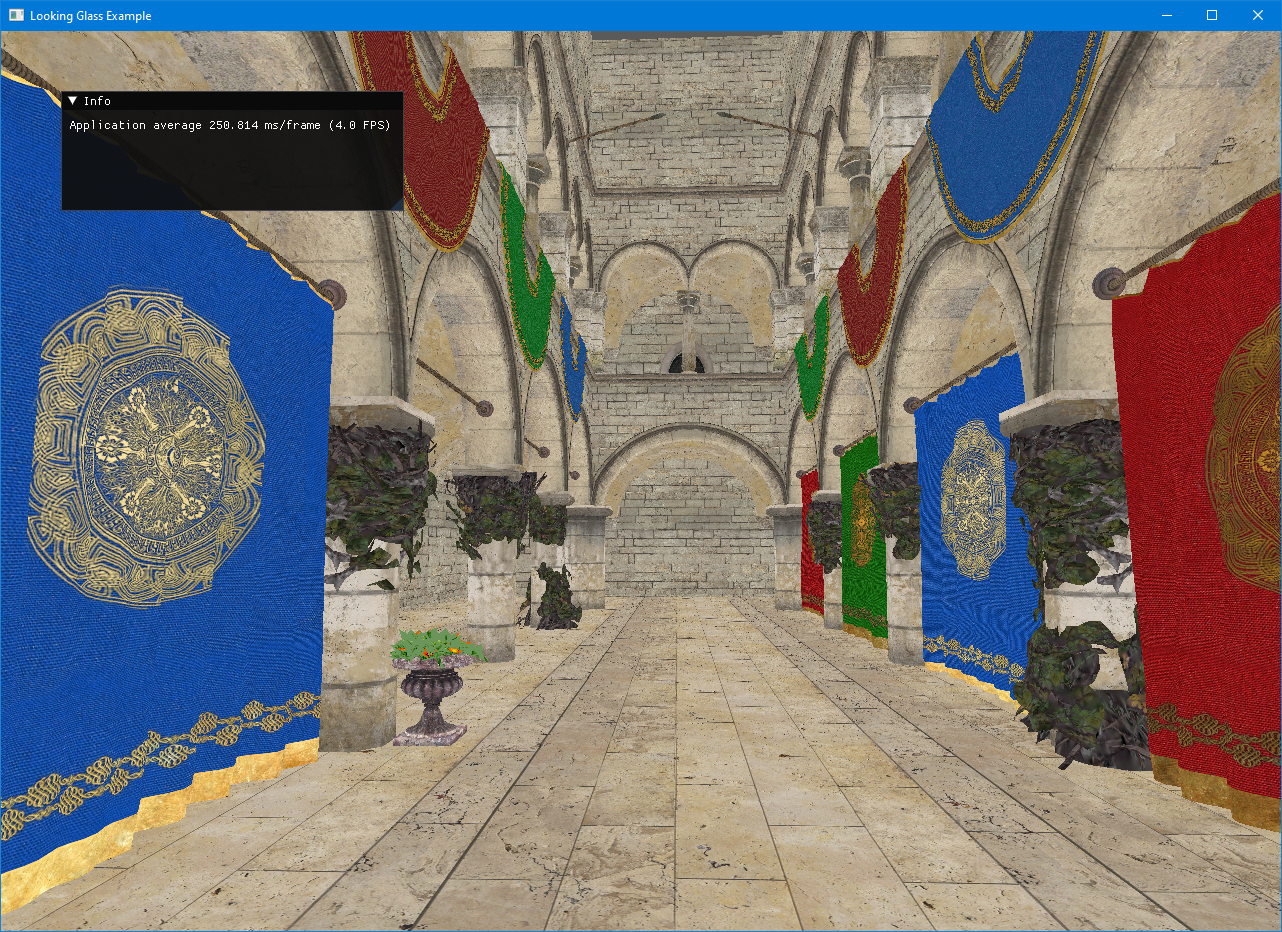
Sponza scene(only 80 objects) running on RTX 4090
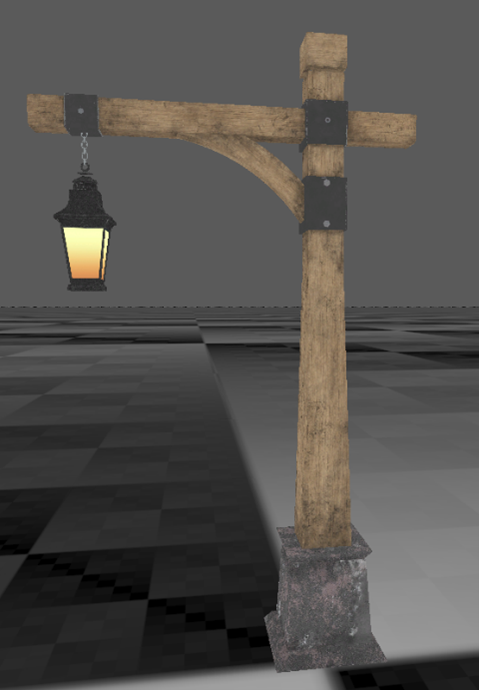
Lantern scene running at GTX 1050 Mobile
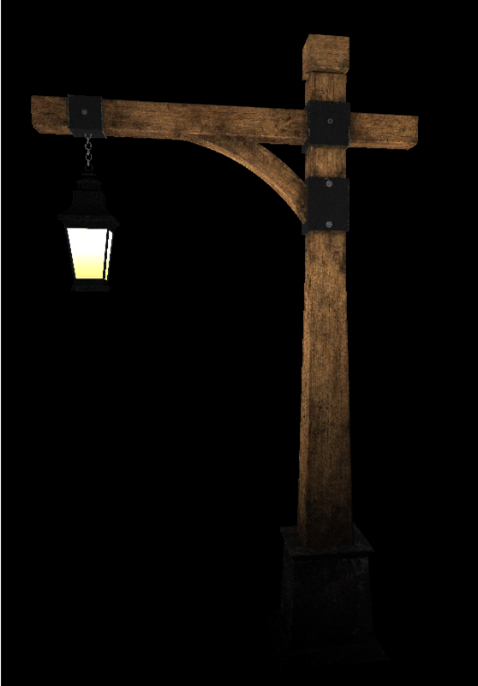
Lantern scene in path tracing mode

Cornell box scene in path tracing mode
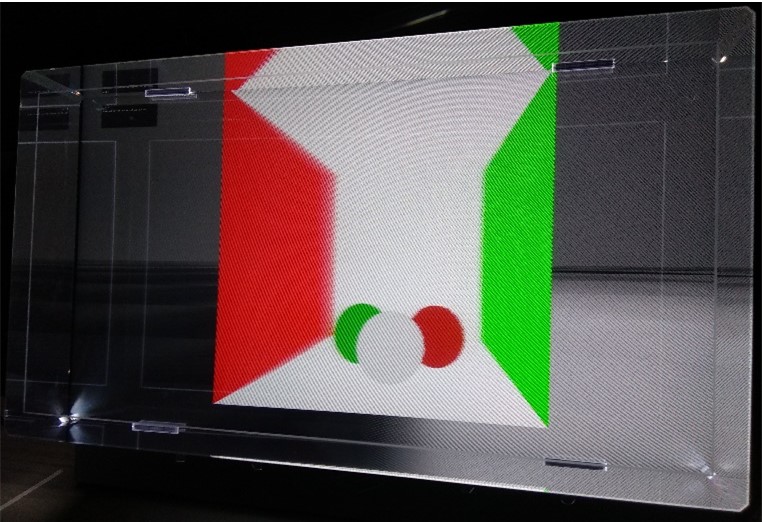
Cornell box scene ray traced on looking glass
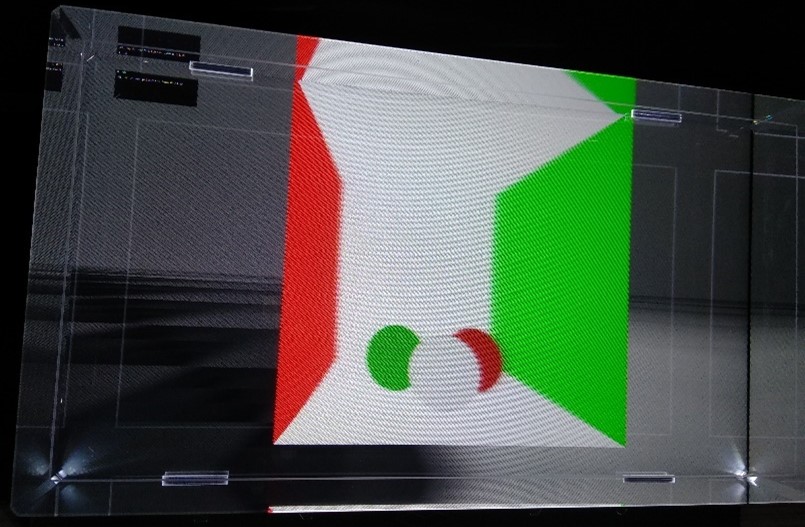
Different view
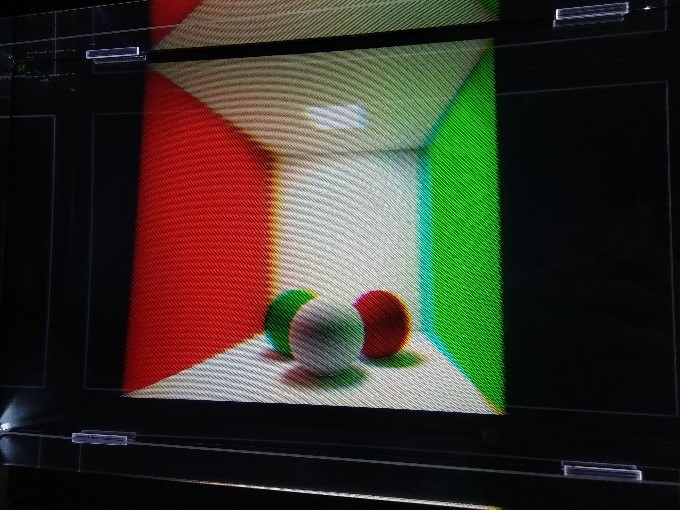
Cornell box scene path traced on looking glass (different subpixel handling not functional yet)
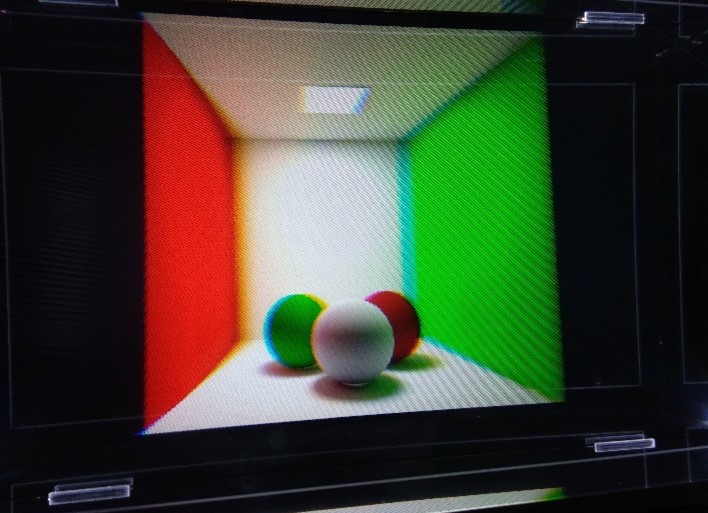
Different view
-
C++ 20
-
System with OpenGL 4.3 and bindless texture support (ARB_bindless_texture) (find your GPU support here)
-
node - only for calibration via Holoplay.js
-
node modules (managed automatically by
npm)- holoplay
- mock-dom-resources
- three
- ws
-
C++ libraries (managed automatically by
vcpkg)glewglmsdl2imguilibusb- for calibration via USBnlohmann-json- for parsing calibration datatiny-process-libraryassimpstb- for loading scene texturesnativefiledialog- for the selection of scene fileboost-stacktrace- for nice debug info
- Department of Computer Graphics and Multimedia at FIT BUT - for borrowing me a Looking Glass display and ray generation algorithm
- kayru/RayTracedShadows - BVH construction
- 3DApps - LG USB Calibration
- Embree-style Möller-Trumbore ray-triangle intersection
- Scene loading - assimp example
- Tutorial about bindless textures